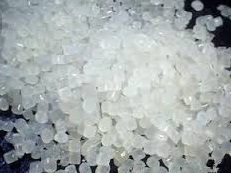PE, PP, PVC prices on the rise – PE PP PVC prices - Arhive
PE PP PVC prices
February is a short month, but North American producers of polyethylene, polypropylene and suspension PVC resins still found plenty of time to raise prices.PE PP PVC prices
 Average selling prices for all three materials are up since Feb. 1, according to buyers and market watchers contacted by Plastics News. Prices for all grades of PE are up an average of 5 cents per pound, while PP prices have climbed 6.5 cents and PVC prices have increased 4 cents.PE PP PVC prices
Average selling prices for all three materials are up since Feb. 1, according to buyers and market watchers contacted by Plastics News. Prices for all grades of PE are up an average of 5 cents per pound, while PP prices have climbed 6.5 cents and PVC prices have increased 4 cents.PE PP PVC prices
Price hikes for all three materials are tied into a combination of higher demand, tight supplies and higher feedstock costs.PE PP PVC prices
The February PE hike “was a bit of a rebound from the decreases from the end of last year,” according to David Barry, a market analyst with the PetroChem Wire consulting firm in Houston.PE PP PVC prices
“January [PE] demand sounds like it was very strong, even though there wasn’t much export activity,” he said. “And February started with a lot of spot [sales] activity, although that slowed down later in the month.”PE PP PVC prices
Regional PE prices had been flat in January, but a February price increase was expected because of higher prices for ethylene feedstock. PE PP PVC prices
Prices for the material fell an average of 2 cents per pound in December, but were up a net of 4 cents for full-year 2016. PE makers now are seeking increases of 6 cents per pound set for March 1.PE PP PVC prices
The regional PE market is bracing for large amounts of new capacity that are set to come online this year on the U.S. Gulf Coast. At least 6 billion pounds of new capacity is set to arrive this year, although some market watchers have speculated some of these moves may be delayed.PE PP PVC prices
Through November, U.S./Canadian high density PE sales were up just over 2 percent, according to the American Chemistry Council, with low density PE sales down more than 2 percent and sales of linear low density PE up only 0.3 percent.
North American PP prices jumped 6.5 cents in February, following an increase for polymer-grade propylene feedstock. It’s the second straight significant monthly price increase for PP resin, following a 10-cent jump in January.
These moves are a sharp reversal from a combined 11.5 cents in price drops that market had seen in the last three months of 2016. More hikes could be in store for March, sources said, as propylene remains in tight supply.
“Propylene inventory could be at a historical low by the end of March,” one major U.S. PP buyer told Plastics News. “This doesn’t bode well for propylene pricing coming down quickly.”
The buyer added that refinery and steam cracker turnarounds “are hurting the situation, as well as
economics not favoring butane or propane as feedstocks.”
New propylene supply from Enterprise Petrochemicals in Mont Belvieu, Texas, was expected to alleviate the situation, but that project now isn’t expected to come online until mid-year.
North American PP sales were up only 0.4 percent for full-year 2016, according to ACC. Domestic sales fell 2.5 percent, with exports surging up 114.8 percent.
In the North American PVC market, the 4-cent February hike was expected, based on the same ethylene price movements that sent PE prices up. It was the first market movement for PVC since November, when producers essentially gave back a 2 cent increase they had won in October. Prior to those two moves, regional PVC prices had been flat for four consecutive months.
For full-year 2016, North American suspension PVC prices were up a net of 7 cents per pound. PVC sales in the U.S. and Canada enjoyed a solid year in 2016, growing more than 4 percent to more than 15 billion pounds, according to ACC. Domestic sales were up almost 4 percent, with exports up almost 6 percent.
“I’m optimistic on domestic demand for 2017,” an executive at a PVC maker told PN. “I think it will be steady, but not gangbusters. The skilled labor shortage is a real problem.”
Construction-related uses accounted for more than 63 percent of U.S./Canadian PVC sales in full-year 2016. U.S. housing starts grew almost 5 percent for the year to just under 1.17 million.
That marked the seventh straight annual increase for the market, which had bottomed out at 554,000 in 2009. U.S. housing starts had been as high as 2.07 million in 2005.
